-
Posts
2,481 -
Joined
-
Last visited
Content Type
Profiles
Forums
Articles
Gallery
Downloads
Events
Posts posted by BillyBones
-
-
We have this machine that you input the dimensions of the of part, put parts in the machine, and it uses lasers and within about half second measures all those dimensions and tells you what the measurements are and if they are out of spec are displayed in red.
Those instruments are by 1/2's to the hundred thousandth but accurate to the tenth. A lot of parts i run have +/- .0005" tolerance. I am also holding that tolerance on a machine that was designed 100 years ago and run anywhere from 3,000 to 17,000 a shift. Depending on material, size, etc.
-
That thing with the pins i have always heard called a contour gauge. It is quite useful in carpentry. Say you are laying floor and there is a pipe or something that you need to fit around. Just push it against the pipe then transfer that "image" to your board and it will fit. Takes a lot of guess work and trial and error out of doing it.
Starrett makes quite high quality measuring tools. Just about every set of mics i have ever owned has been Starrett. Brown & Sharp is also a good brand but i have a hard time reading them. All of our digital instruments at work are Mitutoyo. They measure down to .000005".
-
That is a pretty cool doo dad.
-
On 4/6/2024 at 11:06 PM, Will Brouwers said:
Would running pins through it and the rest of the hammer help?
We just repaired a casting on a machine at work. Mill or grind a couple flats on the broken off part. Drill, i would use 3 from the looks of the size of the piece, holes through the piece. Drill and tap 3 holes in the place it broke from. A bit of JB weld will hold it in place while drilling and can be easily dislodged after. Clean both surfaces really well then bolt it on and have a competent welder run a bead around the seems.
The machine we repaired is basically and automatic lathe, Davenport 5 spindle, that is pushing a tool into a 7/8" round bar of steel. The repair point is the fulcrum for the tool and i will guarantee it has way more pressure on it that what you have. The repair has been holding up nicely.
-
-
-
You should have several different radii on your anvil in my opinion. Near the cutting bench on the far side of my anvil it is a good 1/2" radius, that is what i refer to as the "soft" side. Makes an excellent fuller. I have a Mousehole that was made in the 1850's so much of it has come from being used for that purpose i suspect. Then the radii get smaller as you go around my anvil, to the front side that has very small radii. If i do need a sharp corner i use the end of the heal sideways or an anvil block.
About the support on the horn, the horn is an obtuse triangle and with the one angle on the bottom of the horn it is inherently stronger with more support than what a cylindrical shape would be. I think that is why some anvils the horn slighty points upward and is more of a scalene triangle. The driving force of the hammer blow is directed into the body of the anvil. Or i could be full of hot air on that.
-
Frosty, when i was a kid my grandma told me that you have to let a wild spot grow in the yard so the Fae folk could have a place to live. I have always had a spot or corner of my yard that i do not mow or take care of and let it grow wild becuase of that.
Nobody, For me along those lines it was "finer than frogs hair" usually in reference to an attractive woman, Ribeye britches instead of milkbone boxers, the cat one got me, and "Fair to middlin" was usually in response to "How ya doin?". I had a squad leader in the Army that had a couple good ones i always liked. If you asked him what was going on he would say either " Aint nothin shakin but he beans in the pot and the beans aint shakin cause the water aint hot" Or "Aint nothin blowin but the leaves on the trees and the leaves aint blowin cause they aint no breeze"
I just recently learned of that talkin to the bees thing.
Tanging, now that is definitely new to me but we used to clack rocks to attract bats in the evening. Me and my cousins would get a couple rocks and bang them together, with in a few minutes there would a bunch of bats around. It was usueful on those nights when there was a lot of mosquitos about.
-
1st shift at the shop i work in took their break late. The lady that owns the shop is an absolutely wonderful woman, she bakes us brownies and cookies all the time, sends us birthday cards and stuff, dont tell her if you just had a child our grandchild she will want pictures all the time, but anyway she made sure that everyone their had glasses to watch it with.
I work nights so i did not have to be at work till 4pm, the show was more or less over by 3:30 here so i got to watch it then leave for work. We had warning about people coming here to watch it and that the roads and stuff could be jam packed, but like i said nobody wants to come to Ohio and i had one of the best drives to work since covid shut everything down.
-
In Iceland you will find little tiny houses on road sides and the like that are put there for the Fairies.
This past summer i taught my granddaughter how to build fairy houses with twigs, leaves, grass, etc. in the backyard.
-
I very rarely use the horn of my anvil. I have tried but as far as fullering on it i get much better results using the soft edge or a hardy fuller. Mostly i just use the pein of my hammer on the flat face though. For rings and scrolls i have anvil bicks and the like for that.
If i were looking for an anvil, i would buy it. If it had good rebound and no dead spots that is.
-
5 hours ago, Frosty said:
supposed to cross Alaska in March some 20 years from now.
Frosty you are right about the month but it is 9 years away in 2033.
-
One of the reasons i like living in Ohio, nobody wants to come to Ohio.
We had clear skies and i got to see the eclipse quite nicely. Did discover one thing though, my auto darkening welding helmet does not darken when pointed at the sun. Had to get out the old one with just a dark lens in it.
-
Buy? Who sad anything about buying? I was going to make a drill.

Frosty, thanks for the tip about the copper.
Julian, that is how they have been done for many centuries, not my idea so please do go for it.
Huh, 3 pm and it is getting dark outside. Wonder what is going on?
-
Goods, i also like to look at the background of photos and sometimes ask about stuff in the background.
As far as function they work quite well. I made some similar for my bathroom but rather than spirals they have leaves on the ends.
Got my rock prepared to drill, got my lead ready to melt, got my hammer drill ready to... well, drill. Then come to find out that i do not have a drill large enough for the legs. My biggest is 1/2" and the legs are made of 1/2" square bar. So the boot scraper will have to be put off till next weekend.
-
Finished and put a handle on the tomahawk i made, can definitely tell it has been a while. Had to reshape the eye. Ordered some handles and they are oval rather than teardrop shaped.
Then i made a couple towel holders and a boot scraper. The rock is what i am going to mount the boot scraper in. Today i will drill the holes and pour the lead. Please ignore the mess on my bench...
-
Just doing a youtube search on "making charcoal" came up with dozens of videos making charcoal the primitive way. From huge mounds like Frosty mentions to much smaller scale about the size of an average camp fire, maybe 3 feet tall.
-
If you have the space you do not need a barrel or any kind of container. Charcoal used to be made by piling wood up then covering it with wet dirt, not quite mud but very wet. IIRC pile up the wood, then a layer of dried leaves, then mound it all in wet dirt. Leave 4 air holes in the bottom, light the fire through the holes. When it is going good seal up the holes. again if i recall correctly i do not think you even need a vent hole in the top after it starts burning good. Next morning crack it open and you have charcoal.
-
Stair railing for a motorcycle shop.
-
The weld actually came out better than i wanted. I had to actually work the bit end apart little by little with a chisel to get the bit in. I can usually just pop the initial weld apart in my vise with a chisel.
Nice fork and spatula, are the handles curved or is just a heavy chamfer giving it the look of being curved?
-
Expecting some weather tonight so the cancelled my shift at work today. That means a free day in the shop to me. So i made a tomahawk/belt axe. Still a bit thick started with 1/4" x 1 1/2", want to draw more of a "beard" into it. 1018 flat with a 1095 bit, 1/4 x 3/4.
Edit: forgot to add, it has been a long time since i made an axe of any sort so this was just a aint done one in a while kind of thing.
-
Being one of those crazy preppers i just so happen to have a steel pot. I keep t in a go bag along with my gas mask and MOPP suit. Here it is with the liner taken out.
When i was in we had the kevlar helmets. So to heat water and the like we used a canteen cup. Try taking a bath in one of thse sometime. However being on an Abrams tank we could just start the tank and heat water on the exhaust vents of the turbine engine.
-
Welcome aboard.
I did a couple stints with the 3rd ID in Germany and the 1st Cav in Tx. 19K, M1 tanker. I got out before retirement becuase of the politics.
I think there are several reasons as to why we do this. Order from chaos, attention to detail, strict discipline, etc.
Smithing has also one other thing in common with the which i think comes more into play than many other things. In the military one thing that was driven into my head : Adapt, improvise, overcome.
-
Gideon come in with his eyes on the floor
Says, "you ain't got a hinge, you can't close the door"-----------
I should have also said "or made".


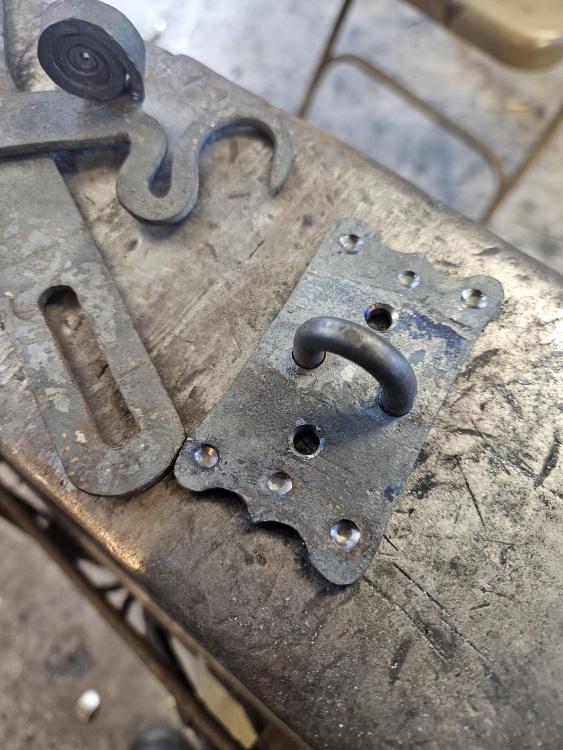
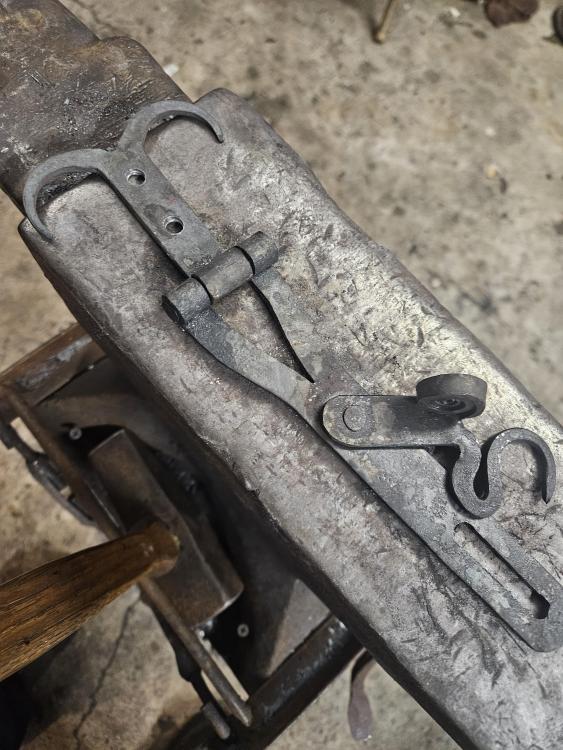
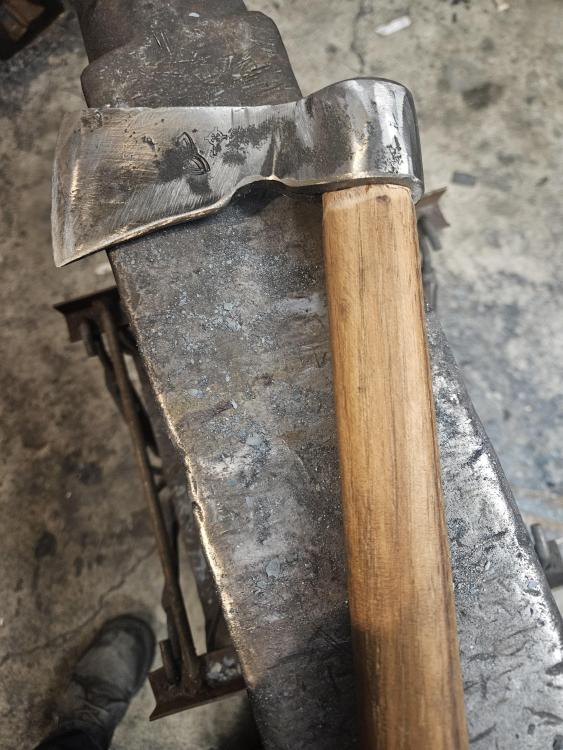
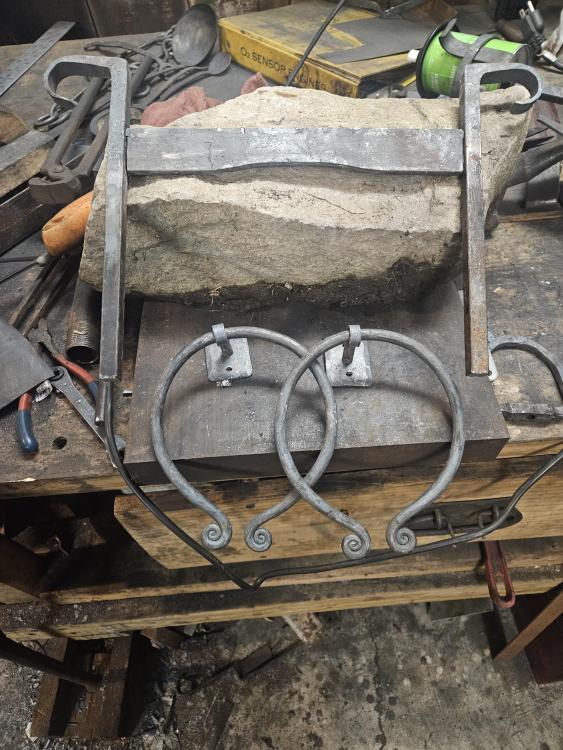
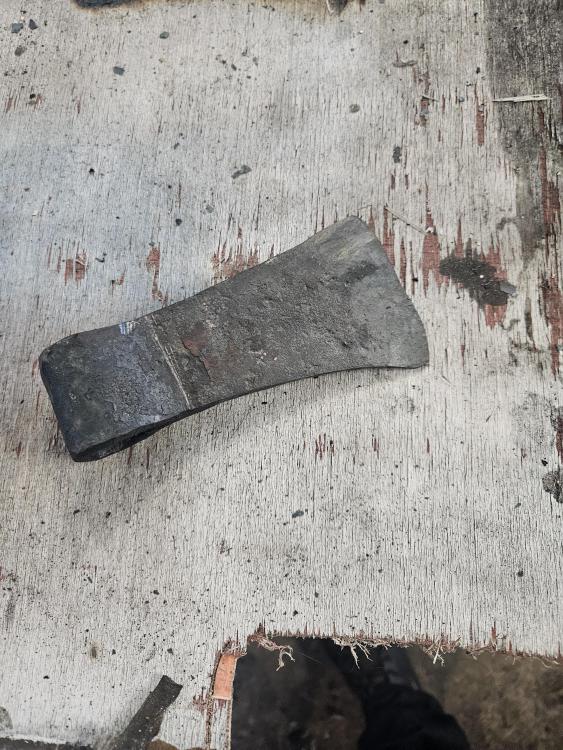
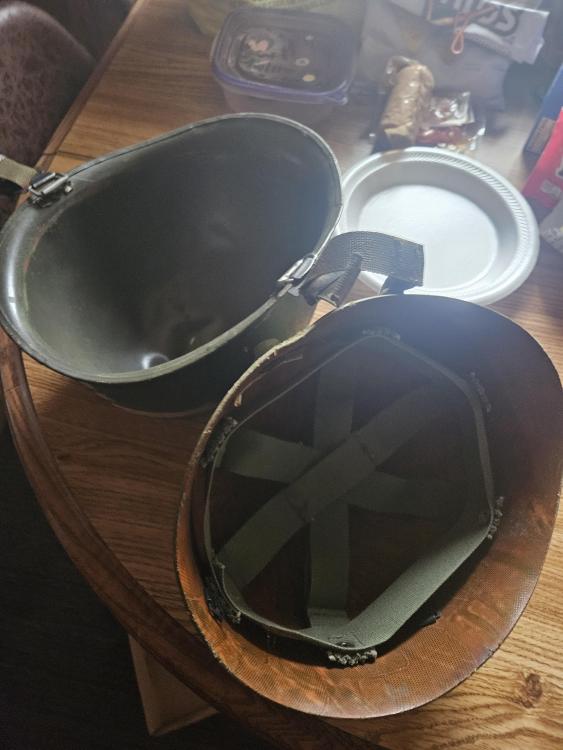
It followed me home
in Blacksmithing, General Discussion
Posted
Yes it is a screw machine. Davenport model B. I think the ones we have were built in the 70's and 80's. No electronic controls except for the button that turns the motor on. Adjustments are made by tweeking a deadstop or swing arm. However the new tooling for these things helps tremendously. We use carbide inserts now instead of the old circular or dovetail tooling. Change an insert and vary rarely do you even have to make an adjustment. I must also admit that tight of a tolerance is usually only one or 2 of the dimensions, the rest i usually get +/- .002 or .003 on. One job i run has a +/- of .005" on the tightest, i love that job. I can sit on my but and watch cat videos when i run it.
I am hoping that soon i will not be doing that anymore though. My foreman wants me to move into the tool room to take over for our tool maker who will be retiring soon. Our tool maker and engineer are also both trying to get the GM to give me the nod as well. Since the first time i ever set foot in a machine shop that is where i wanted to work.